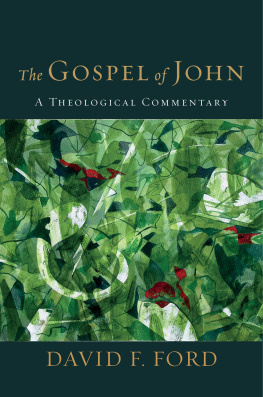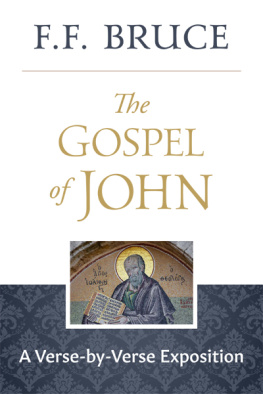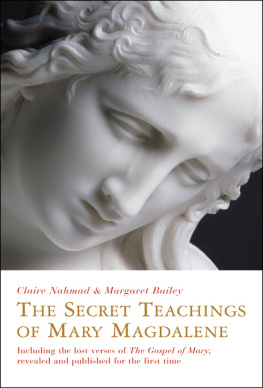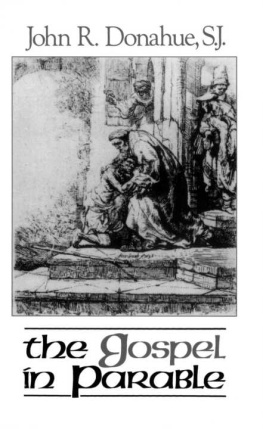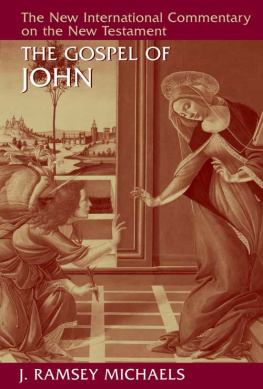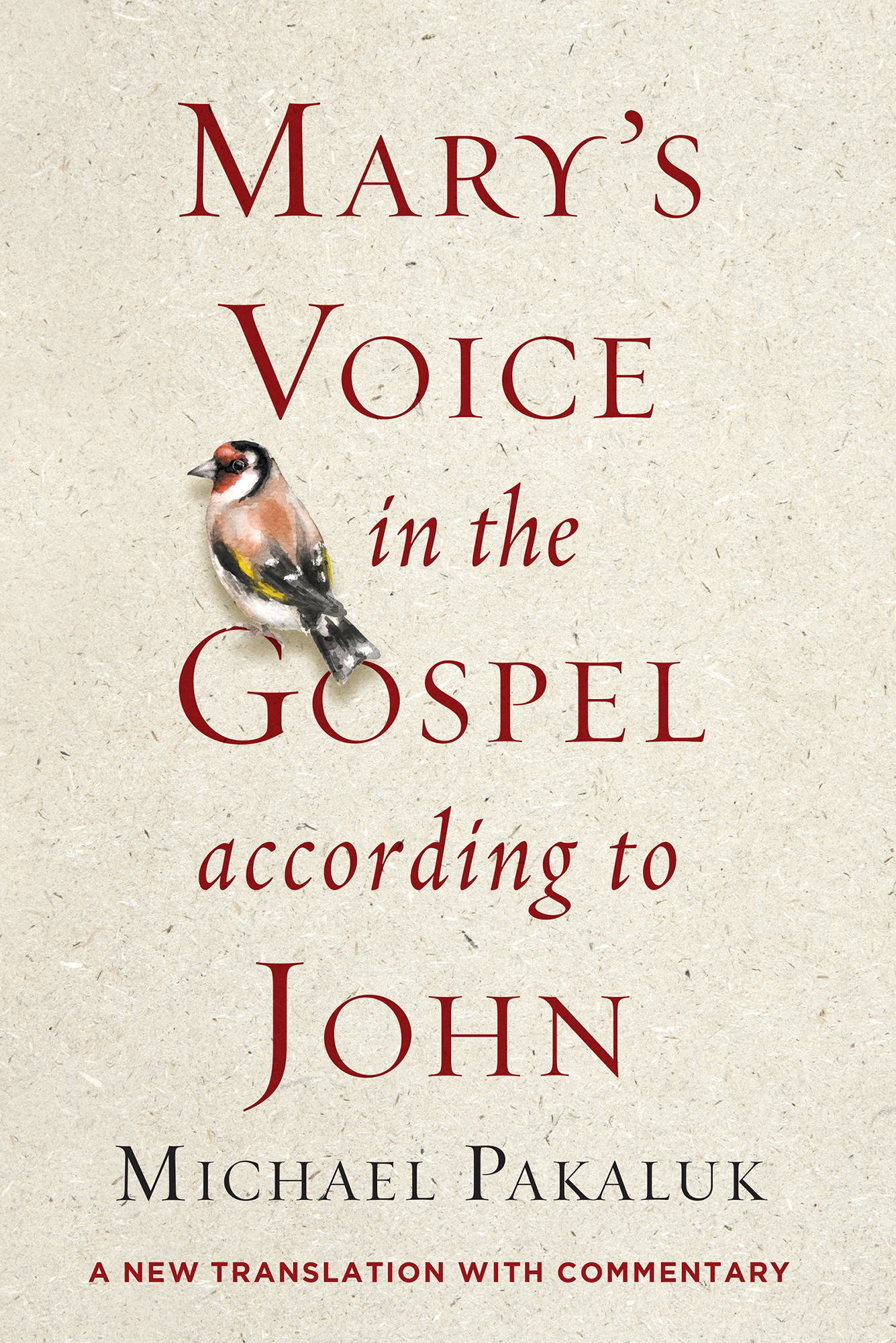Contents
Guide
Praise for M ARYS V OICE IN THE G OSPEL ACCORDING TO J OHN
It is a rare scholar who can make the most familiar ancient text feel like it was just discovered. Such is the case with Michael Pakaluks masterful Marys Voice in the Gospel according to John. With a combination of fascination and joy, I felt like I was reading Saint John for the first time.
ARTHUR C. BROOKS, professor, Harvard Kennedy School and Harvard Business School
Michael Pakaluk has put vast learning and formidable skills as a biblical translator and exegete in service of an urgent Christian task: to teleport us to that humble house in Ephesus, where for some three decades the beloved disciple lived with, and learned from, the Mother of God.
SOHRAB AHMARI, author of the forthcoming The Unbroken Thread: Discovering the Wisdom of Tradition in an Age of Chaos
Michael Pakaluk has presented us with a stunning and beautiful new translation and commentary on the fourth Gospel. He traces the influence of the Blessed Virgin Mary in St. Johns text with the delicacy, grace, and determination of a contemplative sleuth. This is a new and rare accomplishmenta blend of poetic sensibility, spirituality, and scholarship that is a genuine surprise and inspiration.
FATHER DWIGHT LONGENECKER, parish priest and author of The Mystery of the Magi and Immortal Combat
Among all hermeneutical tools available to the reader of Saint Johns Gospel, few compare in theological profundity to Michael Pakaluks simple, subtle, but finally stunning principle of the Marian influence upon the Beloved Disciple. As we read the Gospel, the woman who conceived and bore God incarnate suddenly becomes an intimate presence. The result is an interpretive triumph!
C. C. PECKNOLD, associate professor of systematic theology, the Catholic University of America
From the first sentences of his Introduction, Michael Pakaluk jolts the reader with the remarkable premise of his new translation of Johns Gospel: that the Evangelists words were influenced by the presence of the Blessed Virgin in his household and bore the mark of their two hearts. As was true of his earlier translation of Mark (The Memoirs of St. Peter), Marys Voice in the Gospel according to John is boldly beautiful, deeply literate, and astonishingly fresh. Who else has ever had the courage and insight necessary to offer such a remarkable rendering of John 1:14: And the Word came to be flesh / and he tabernacled among us? Thus does Professor Pakaluk vividly render Christs passage through time and eternity. Amazing.
BRAD MINER, senior editor, The Catholic Thing
The Gospel of John is the only one that relates the moment Jesus, from the cross, gave his mother and his beloved disciple into one anothers keepinga gesture that continues to bear abundant fruit for the Church. In his translation and commentary on the Gospel of John, Michael Pakaluk offers an insight both remarkable and yet completely natural: he has discovered in the voice of a son the tender influence of the mother. Readers will benefit from reading this fresh translation of the words of the beloved disciple, and through them, from hearing Marys voice and meditating on the memories stored in her heart.
ELIZABETH R. KIRK, lecturer and research assistant, the Catholic University of America Columbus School of Law, and associate scholar, the Charlotte Lozier Institute
Michael Pakaluks new rendering of Johns Gospel captures both mind and heart on its journey into Marys gaze upon her Son, expressed through the words of the apostle who took her into his own home. Drawing on linguistic, philosophical, and theological expertise, Pakaluk unites pietas with precision of thought to offer insights that will ignite both prayer and scholarly discussion.
SISTER MARIA VERITAS MARKS, O.P., Dominican Sisters of Mary, Mother of the Eucharist
Michael Pakaluk proposes to confirm what weve long suspectedthat the Mother of God was a deeply influential person in the life and writings of the disciple whom Jesus loved. His careful textual analysis of Johns Gospel finds evidence that Mary was not just a presence in the life of the Church, but a person of great influence who spoke, and continues to speak, with authority about her Son.
JOHN GARVEY, president, the Catholic University of America
Michael Pakaluk offers the intriguing thesis that, in the Gospel of John, we can hear unmistakable echoes of Mary, Mother of God. He gives ample explanation as to why we should entertain this idea, and his rearticulation of the Gospel through this lens is rewarding for believers and skeptics alike. By the books closing pages, it would be difficult indeed to imagine that Mary had not influenced Johns work. Pakaluks insights present an innovative way to approach what is often considered the most challenging Gospel, a gift to experts looking to revisit the text with fresh eyes and to readers seeking Marys elusive voice.
ALEXANDRA DeSANCTIS, staff writer, National Review, and visiting fellow, Ethics and Public Policy Center
Michael Pakaluk always brings fresh thought to any subject he addresses. The effort to discern Marys voice in Johns Gospel not only pursues an unusual theme. It provides careful and sensitive attention to details, the significance of which has been all but ignored. This is a rare kind of scholarship, both enlightening and fascinating.
ROBERT ROYAL, president, Faith and Reason Institute
Copyright 2021 by Michael Pakaluk
All rights reserved. No part of this publication may be reproduced or transmitted in any form or by any means electronic or mechanical, including photocopy, recording, or any information storage and retrieval system now known or to be invented, without permission in writing from the publisher, except by a reviewer who wishes to quote brief passages in connection with a review written for inclusion in a magazine, newspaper, website, or broadcast.
Never Again Would Birds Song Be the Same by Robert Frost from THE POETRY OF ROBERT FROST edited by Edward Connery Lathem.
Copyright 1969 by Henry Holt and Company. Copyright 1942 by Robert Frost, copyright 1970 by Lesley Frost Ballantine. Reprinted by permission of Henry Holt and Company. All Rights Reserved.
Regnery Gateway is a trademark of Salem Communications Holding Corporation
Regnery is a registered trademark of Salem Communications Holding Corporation
ISBN: 978-1-68451-119-8
eISBN: 978-1-68451-122-8
Library of Congress Control Number: 2020945147
Published in the United States by
Regnery Gateway, an imprint of
Regnery Publishing
A Division of Salem Media Group
Washington, D.C.
www.RegneryGateway.com
Cover design by John Caruso
Books are available in quantity for promotional or premium use.
For information on discounts and terms, please visit our website:
www.Regnery.com.
To Maria Almeida
I NTRODUCTION Inspiration
W hat you are about to read is a translation of and commentary on the Gospel of John premised on the simple idea that if Mary the Mother of Jesus lived in the household of John for as many as thirty years, then it should be possible to discern the influence of Mary upon Johns Gospel.
When two people are of one mindas Philippians 2:2 describes people who have[e] the same love I am not claiming that Mary contributed to the actual writing of Johns Gospel; its words were likely given their final form long after she had passed from this life. Rather, I am supposing that what John wrote, in the end, arose from their discussions over decades together and bore the mark of their two hearts. They came to shared views about the importance of some episodes over others; the memory of each helped that of the other; the insights of each informed the thoughts of the other.


